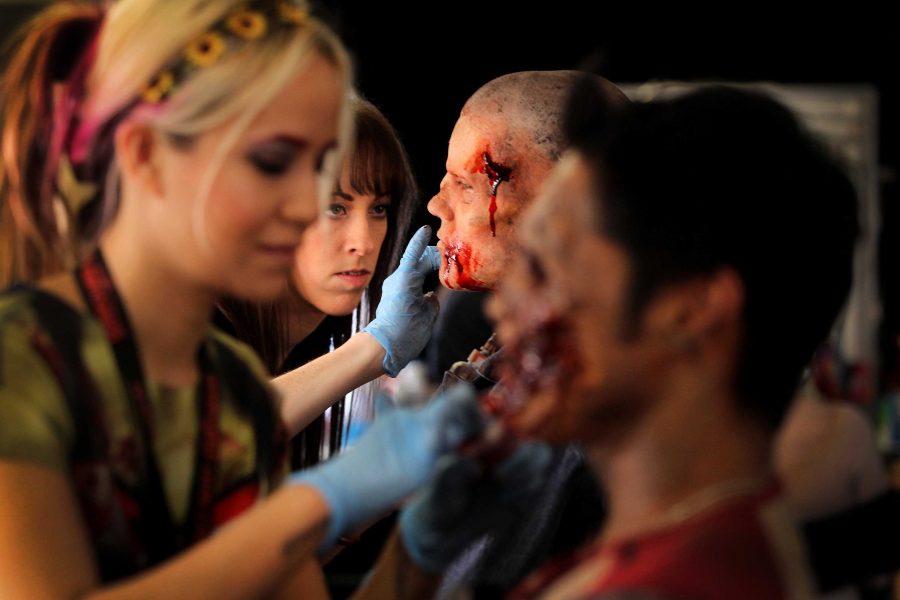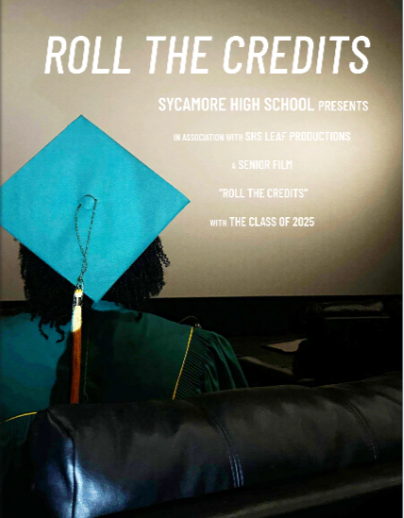Silent scares could save horror
Makeup artists prepare actors for a haunted house. The appeal of haunted houses may be the jump scares and shock value, but horror films need more than that to exceed. Story elements, structure, and cinematography are just as, if not more important.
April 14, 2016
Cheap frights with loud noises have become a staple of modern horror films, but a new movie, “Hush,” is fighting back.
“Hush” is centered around a woman who became deaf and a crazed lunatic attempting to hunt her down. This deafness is not only a story element, but an excuse to keep jump scares out.
Hitfix.com critic Drew McWeeny wrote, “By stripping everything down, it allows [director Mike] Flanagan to essentially make a silent movie. The choices he makes about sound and how to emphasize it are very clever.”
Flanagan has a great track record, having written and directed the stellar “Oculus.” He is trying (and succeeding) to set his film apart and attempting to change how the horror industry operates.
In an interview with BuzzFeed, Flanagan said, “Horror itself is becoming mistaken for loud sounds… There’s no artistry in walking behind somebody and smashing a cymbal behind their head and making them flinch.”
Jump scares are indeed taking the artistry out of what should be one of the most intricately crafted and psychologically based genres of film. Depending on startling an audience for success is a cheap way to bring in money without doing any work.
Critic Chris Stuckmann said in a video, “It is the single easiest scare to accomplish. There is no real effort put into it and the exact same technique is used every time.”
More horror films should do what “Hush” is doing. It may be easier to play it same, but audiences crave to be challenged with meaningful writing and technical risks.







